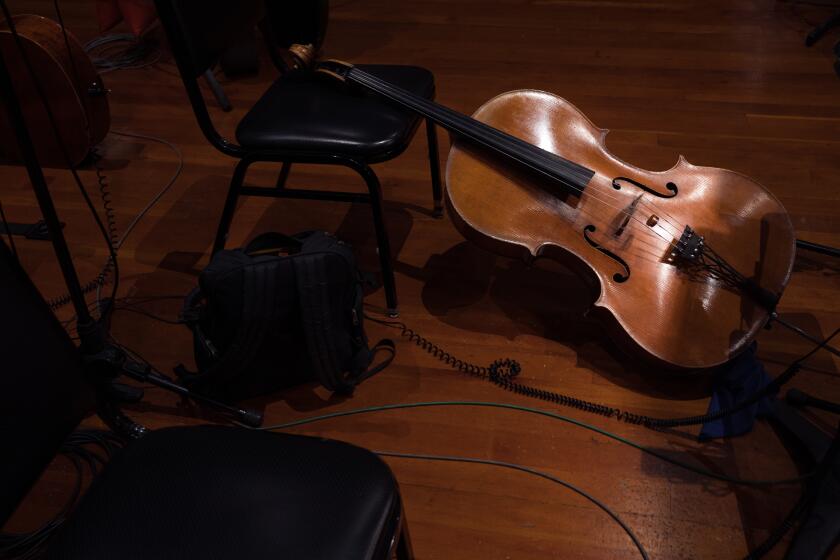Newton: Council lines spark conflict
Fresh on the heels of Los Angeles County’s contentious, divisive and nakedly political supervisorial redistricting debate, the City Council is embarking on its process. Early signs are that it will be contentious, divisive and nakedly political. The council is rife with rumors of deals being cut to protect incumbents in exchange for favors, of enemies settling old scores and of the public being invited to participate in a preordained process — a “facade,” to use one council member’s word.
Many of the rumors are exaggerated, fanned by rivalries and distrust. But the process has already highlighted the council’s many divisions.
Redistricting tends to bring out the worst in elected officials because it strikes so close to home. Politicians can win or lose based on demographic factors in their districts and on the political and financial support contained within the boundary lines. Redrawing lines can eliminate crucial bases of support — or add them.
In an attempt to make the process less political, the City Charter calls for a special commission to take the lead on redistricting. Each council member has a representative, the mayor has three and the controller and city attorney each have one. This time around, that panel is headed by Arturo Vargas, a veteran of this process. One of the commission’s first acts was to choose an executive director, and that’s when the fun began. The commission selected Andrew Westall, a well-regarded professional but one who is closely associated with incoming Council President Herb Wesson. He’s also done work for Councilman Bernard C. Parks, whose district adjoins Wesson’s, and that ended badly, in a lawsuit over fees. Parks is convinced that Westall will work to defend Wesson’s interests at Parks’ expense — especially galling to Parks given the history of animosity between him and Wesson.
In an interview last week, Parks accused Westall of promising council members safe seats in return for supporting Wesson’s recent, successful bid for council president. Westall laughed off the allegation and referred me to Vargas, who said he had never heard of any such thing and stressed that the commission, not Westall, will be responsible for drawing the lines.
One idiosyncrasy of drawing the lines for city districts is that the mapping has to start with the 15th Council District. That’s because the 15th is surrounded by communities outside the city except on its northern edge, so the only variable for the 15th is how far north it extends along the 110 Freeway. Its northern boundary, in turn, determines where the adjoining districts, currently the 8th but conceivably the 9th as well, begin. It is, as Vargas noted, essentially a “thermometer,” rising and falling with shifts in population.
Once the 15th is sketched in, the other southern districts have to be shaped around it. Again, that worries Parks, who believes the commission will shift his boundaries south and Wesson will quietly maneuver to strip him of Baldwin Hills, a prosperous black community and a mainstay of Parks’ base.
“The whole issue of debate and discussion is going by the wayside,” Parks said. Vargas again disagreed. The issue of Baldwin Hills “has not come up at all yet,” he said. He insists that the commission will not start producing maps until it finishes holding at least 15 public hearings.
Meanwhile, other battles loom. The current council lines carve up the Valley in a weird configuration, with a total of five districts that are wholly within the Valley and two more that include land on both sides of Mulholland Drive. The Valley could probably support six districts that were entirely within its boundaries, making them more Valley-focused, but that would mean fewer districts that included Valley residents.
Downtown is another object of controversy and desire. Councilman Jose Huizar’s 14th District lost some population in recent years, so its boundaries need to expand. One possibility is that it would push into downtown, and though no one’s dying to pick up skid row, he undoubtedly would welcome the area around L.A. Live. If that were to happen, it would come at the expense of Councilwoman Jan Perry, who has helped spur growth in that part of town and is counting on the area’s financial base in her campaign for mayor. Perry said she’s already heard of maps quietly circulating, and she, like Parks, worries that the public is being sidelined in favor of political gamesmanship. “They’re off on the wrong foot,” she said of the commission.
And then there’s race. One clear demographic dynamic within the City Council is the fading influence of Los Angeles’ black population. It’s still habit to talk about the council’s three “black seats” — the 8th, 9th and 10th districts — but in truth, only one of those seats, the 8th, still is home to a predominantly black electorate. The 9th and 10th districts are held by African American incumbents, Perry and Wesson, but the voting base is increasingly Latino.
Vargas, who jokes that his scars have only recently healed from participating in this process 10 years ago, says he is determined to preside over an orderly redistricting infused by substantial community input. Perry and Parks say that opportunity already has been lost. This will get uglier before it’s over.
More to Read
A cure for the common opinion
Get thought-provoking perspectives with our weekly newsletter.
You may occasionally receive promotional content from the Los Angeles Times.











